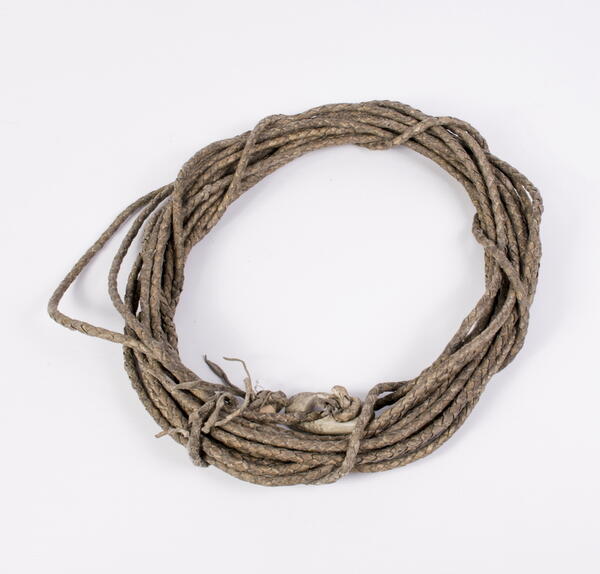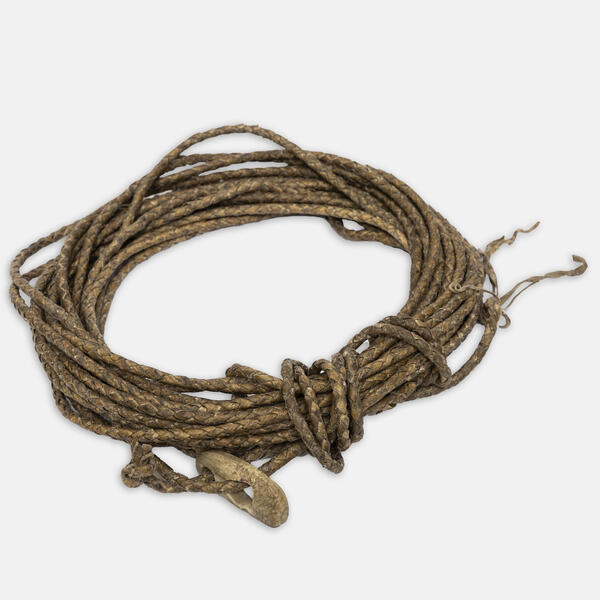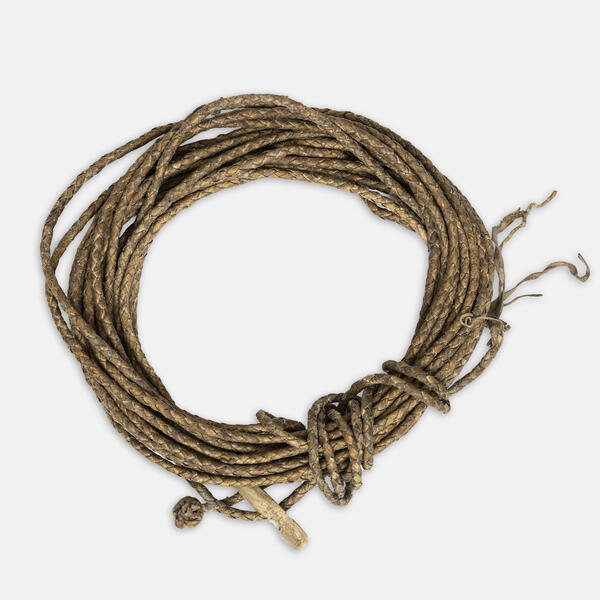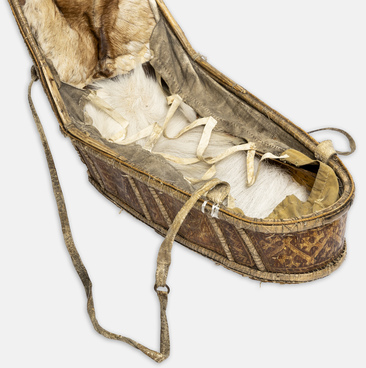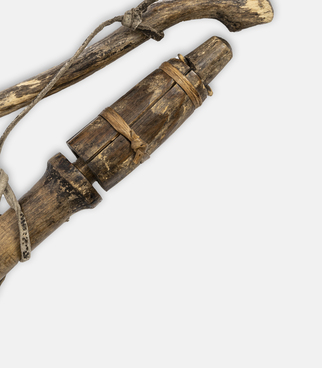The lasso is a long rope with a loop at the end, similar to the one used by cowboys. It remains the main tool of reindeer herders and is used for catching wild reindeer, controlling the herd, and while moving camps. A lasso can easily replace a rope for securing belongings on a sled, crossing rivers, and performing various functions during hunting.
During the day, reindeer graze near Khanty camps, and at night they are released into the forest. To separate some reindeer from the herd, the herders use a corral. This is a special portable pen made of wooden poles. Adult reindeer, trained to wear harnesses, are herded down into the corral. The ones that are not captured into the corral are lassoed.
Lassoing has always been a highly valued skill among reindeer herders. It requires dexterity, strength, endurance, and skill. Young boys study lassoing from an early age. By imitating their older brothers and fathers, they learn to coil the lasso, estimate the distance, and throw the lasso accurately. Any traditional festival of reindeer herders includes a lassoing competition.
Before a lasso is thrown, it is coiled. The number of coils is determined by eye, taking into account the distance to the reindeer. At the right moment, the herder releases the rope at the animal, adjusting the movement of the loop, which should not tighten in the air. After the reindeer has been caught by the antlers or the neck, the loop is tightened with a special runner.
A lasso is made from strong deer hide not affected by parasites and insects. The strongest lassos are made from the hides of old wild reindeer. The material can be prepared all year round: in winter, the hide lies in the cold, and in summer, it is soaked in water to separate the pile. The hide is scraped and cut into long strips about six millimeters wide, tapering toward the end. After that, the strips are woven together.
The bone plate is cut from deer or elk antlers and
helps to tighten the loop quickly and easily. Traditionally, lassos are made by
men. The light brown lasso from the museum’s collection is woven in the traditional
way from four strips of leather.

